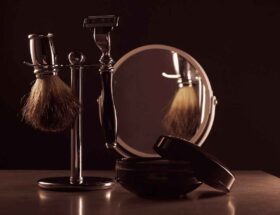Gold has captivated people ever since the dawn of time. It defies both man and time since its glitter in direct sunshine never tarnishes and is unaffected by air exposure. Furthermore, gold’s physical characteristics enable it to be hammered into fine sheets known as gold leaf. Gilding is the process of applying gold leaf to things’ surfaces to enhance their appearance and value. In this blog, let us discover the popular techniques of using gold leaf for gilding.
Techniques of gold leaf gilding:
The process of applying gold on pottery, glass, metal, or wood is known as gilding. By extension, it also includes the coating of copper or another metal that resembles gold, such as a layer of silver covered in a golden varnish. Therefore, it is essential to start by outlining the fundamental procedures to address the issue’s root.
Gilding with mercury:
An amalgam made of molten gold and mercury is applied to the metal object and heated to vaporise the mercury until it is completely gone. The deposited gold is burnished to provide a shiny surface after cooling. The burnishing emphasises the outlines and features that the monotone gold tone unified.
Gilding using gilding paste:
After isolating and cleaning the surfaces to be gilded, the gold is applied in sheets of 7 to 9 cm2, 4 to 10 microns thick, bonded using linseed oil, and cured at 150°C in the presence of a metallic salt (manganese, lead). Depending on how it was prepared, the oil oxidises when exposed to air after 3, 6, or 24 hours and became tangled and slightly sticky. The leaves adherence is still weak because they cannot withstand scraping, but the gilding technique provides brilliance without any subtleties.
Gilding with varnish:
Since Louis XV advised it to reduce the amount of gold his subjects put on bronzes, the varnish is frequently used for gilding. On heated pewter, a yellow varnish is applied. The impact may be deceptive, but it is not time resistant. As a result of the varnish cracking, the metal oxidises.
Gilding by friction:
This simple procedure involves scraping a gold nugget against a heated metal. The thickness of the deposit embedded into the surface can vary.
Gilding with electrolytes:
The earlier method has been replaced by gilding by electrolytic deposit, which first occurred in the second half of the 19th century. This process is frequently used for jewellery, faucets, or bronze furniture that has been “gold-plated.”
The item being gilded is placed in a tank with electrolyte and connected to a negative terminal. Gold is being applied, and it is also lowered into the tank whilst being attached to a positive terminal. The gold is deposited onto the bronze as soon as the electrodes are linked. This chemical method is more uniform than mercury-based gilding and has a reddish hue. However, it is also more expensive and can be applied to industrial objects.
Conclusion:
If you too want to purchase the best quality gold leaf for gilding, you can consider choosing Manetti, one of the leading producers of high-quality gold leaf.









